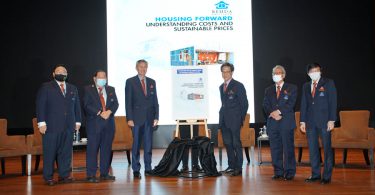A civil engineer whose forte lies in the area of sustainable hydropower, Karen has over 25 years of experience in water, energy and transport sectors under her belt. As Chief Operating Officer for Southeast Asia of both Surbana Jurong and SMEC, she also serves as a Board Member of the International Hydropower Association (IHA) since October 2021.
Passionate about advancing hydropower as a key to transitioning to ‘green’ energy, Karen shares with Construction+ her insights into the development of related innovative infrastructure in Asia. She also showcased projects she has been involved with such as the completed Ulu Jelai Hydroelectric Project in Malaysia, the upcoming Snowy 2.0 in Australia and beyond.
How would you define hydropower?
Hydropower generates electricity using the force of nature when water flows downhill. Although these days we make electricity from that, it is a source of power that has been around for thousands of years—think of a water wheel that would have been used before the Industrial Revolution. We are just now refining this power source and realising its importance in the energy transition from fossil fuels.

Ulu Jelai Hydroelectric Project was designed to make the most of the dam’s location in a narrow valley; image by SMEC
What are your recent observations on the construction and development of hydropower infrastructure in the Asia Pacific region?
Prior studies highlight that there is over 1,100 gigawatts of potential capacity in Asia for hydropower that has not yet been built, so that is a lot of power that could reduce the region’s fossil fuel needs quite significantly.
Overall, the development of hydropower infrastructure in the Asia region is moving in the right direction at quite a slow pace. To begin with, pumped storage has not really caught on in this region yet, with Australia currently leading the way.

Existing Talbingo Dam of Snowy Scheme; image by SMEC
How can we work together across industries to advance integrated solutions that support hydropower development while also addressing broader challenges such as climate change?
Projects that look at utilising hydropower for industrialisation and economic benefits are ideal. For Southeast Asia that has a lot of hydro potential, we can look at building hydropower that will then power an industrial park, whether of smelting, manufacturing or others. It is green energy creating downstream industries and economic opportunities for the region.
The big point that everybody has agreed on is that we have to move away from using fossil fuels. To mitigate the effects of climate change, the best thing we can do is accelerate hydro projects.
This is an excerpt. The original article is published in
Construction+ Q2 2023 Issue: Infrastructure & Transport.
Get the print magazine or subscribe to the digital edition to read the complete article.

 Hong Kong
Hong Kong Singapore
Singapore Indonesia
Indonesia Tiếng Việt
Tiếng Việt ประเทศไทย
ประเทศไทย










